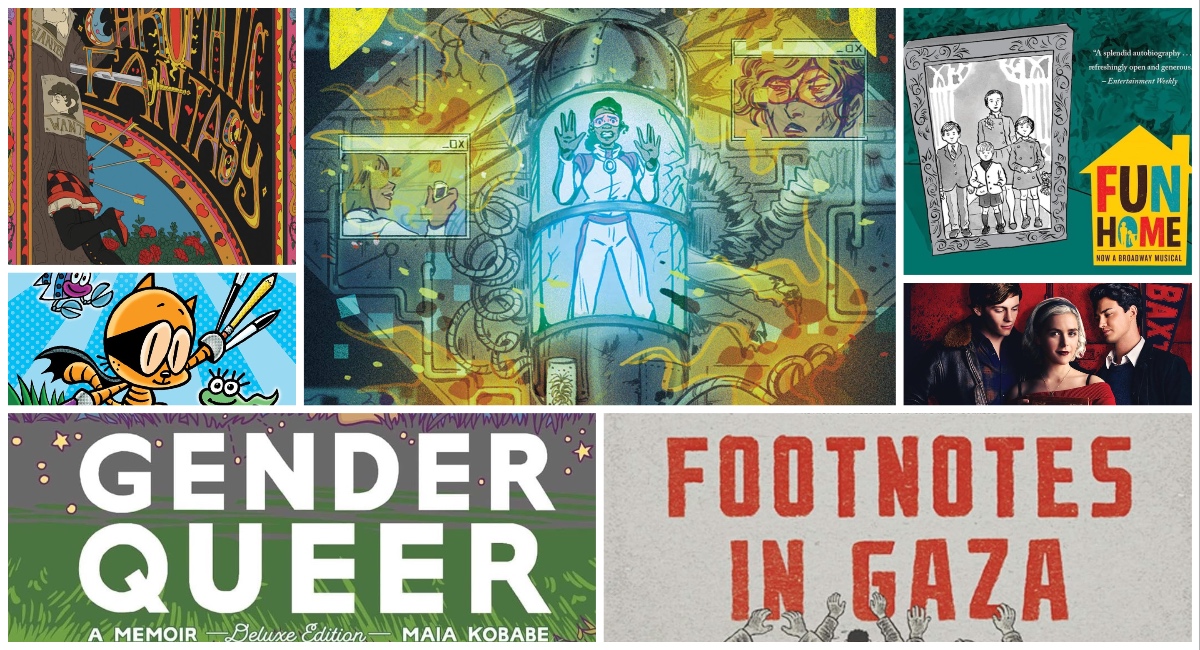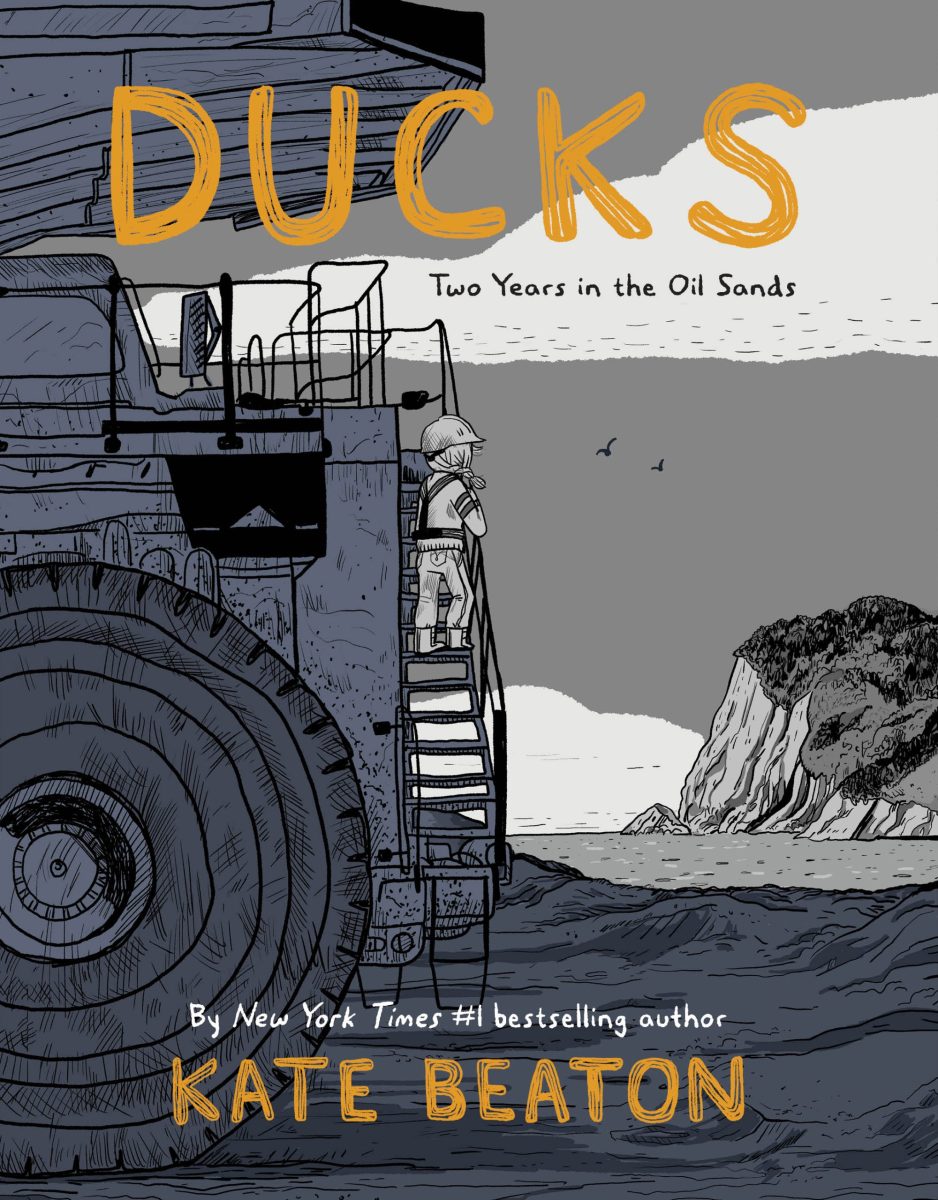The 17 Best Graphic Novels of All Time (Ranked)
Bad men don't make the best comics.

Who reads graphic novels? In short, everyone. Don’t believe what you’ve been told about the comic book industry. In 2015, an ALA study of great graphic novels for teens showed that 46% of titles featured one or more female characters.
Sometimes, the graphic novel gets a bad rap as the format that screwed over Alan Moore (in that regard, there are probably valid complaints). However, the format also brought with it previously unknown creative freedom.
As the format has grown, the types of graphic novels offered to readers have become more varied and include manga, personal narratives, graphic medicine, non-fiction, and trade paperbacks, which are collected storylines of cape comics and non-superhero stories. Despite the rapidly growing graphic novel market (compared to the stagnating floppy market), there’s been a stagnation in how we think—after all, “bad men make the best comics.” Thus, many of the “best graphic novels of all time” lists that I have seen remain stagnant, dominated by cisgender, white men.
Many of these graphic novel suggestions will not be revolutionary to avid fans. However, I hope to offer a different perspective on determining the most influential cartoonists of our age.
17. Dancing After TEN by Vivian Chong and Georgia Webber

Graphic medicine is becoming increasingly common, and for a good cause, too, as the format is shown to bridge the communication divide between patient and doctor. Artist/author Vivian Chong and artist Georgia Webber’s Dancing After TEN, a memoir about Chong’s experiences with the rare skin disease TEN (Toxic Epidermal Necrolysis), was created in the face of seemingly insurmountable circumstances, standing as a testament to the power of sequential graphic narrative in medicine.
16. Black Star by Eric Anthony Glover and Arielle Jovellanos

Black Star is Eric Anthony Glover’s debut graphic novel, based on his unproduced screenplay and brought to life by the incredible, otherworldly art of Arielle Jovellanos. It’s a cinematic sci-fi misadventure that explores some of the bleakest corners of space-set survival stories. Based on Eric, AJ’s art brings the focus to life.
15. Crisis Zone by Simon Hanselmann

Composed in front of a captive Instagram audience as the U.S. COVID-19 lockdown protocols were implemented, Simon Hanselmann’s Crisis Zone is THE most accurate record of those hazy early pandemic days (weeks, months, years?) anyone has yet to produce.
14. Submerged by Vita Ayala, Lise Sterle, et al.

In Submerged by Vita Ayala, with art by Lisa Sterle and Stelladia and lettering by Rachel Deering, a young person undergoes a mythological journey through the flooded Subway tunnels of New York City. There’s no way that you’ll finish this story the same person you were when you started it.
13. Saga by Brian K. Vaughn and Fiona Staples

There is a reason that so many of Brian K. Vaughn’s comics have become household names, but even so, his sci-fi opera masterpiece with collaborator Fiona Staples (and major props: BKV won’t let anyone forget Staples’ contributions) is special. Saga is an intimate family story set against a backdrop of interplanetary war, offering everything you wish the other space operas would … and more.
12. March: Book One by John Lewis

Written by the late Congressman John Lewis (GA-5) in collaboration with co-writer Andrew Aydin and New York Times best-selling artist Nate Powell, March is the first installment of the quintessential graphic novel trilogy about political resistance. As we move into another election year in which the threat of fascism looms large, this work is just as important now as it ever was.
11. Footnotes in Gaza by Joe Sacco

Dedicated to the “People of Gaza,” Joe Sacco’s Footnotes in Gaza is an important work that demonstrates how devastatingly effective comics can be for telling journalistic narratives rooted in real-life stories. Through his dynamic, detailed artwork, Sacco writes an engaging narrative that details the experiences of people living in Rafah.
10. Chilling Adventures of Sabrina by Roberto Aguirre-Sacasa and Robert Hack

Archie Horror may have started with a variant cover that spun into Afterlife With Archie, but the line reached its apotheosis with Chilling Adventures of Sabrina, a horrifying take on a mostly 1960s period piece that combines Roberto Aguirre-Saracasa’s unique perspective with Hack’s stellar artwork for an award-winning take on the infamous teen witch (y’all know the one) that signaled that the Comics Code Authority wholesomeness of the original Archie Comics was officially a thing of the past.
9. The Chromatic Fantasy by HA

HA’s horny revisionist history of life in a nunnery offers us a queer romp about a trans man who makes a deal with the devil to escape his imprisonment. What follows is a crime spree and sexual debauchery that rivals even the most imaginative Penthouse letter—SERIOUSLY RECOMMEND.
8. Smile: A Graphic Novel by Raina Telgemeier

Based on cartoonist Raina Telgemeier’s childhood experiences trying to fit in after a major injury led to years of treatment with “embarrassing” dental headgear, 2010’s Smile: A Graphic Novel normalized childhood therapy for anxiety. Remaining on the NYT bestsellar list for about a decade (often alongside other work by Telgemeier), this middle-grade work also changed the publishing landscape forever and led to the launch graphic novel powerhouse Graphix (a.k.a. “The House That Raina Built”) in 2014.
7. Ducks: Two Years in the Oil Sands by Kate Beaton

After cutting her teeth on the NYT bestselling webcomic Hark! A Vagrant, Kate Beaton garnered critical acclaim and international attention for her stark graphic deconstruction of capitalism, Ducks. The graphic novel offers a nuanced portrait of the inhumane conditions to which capitalism subjects all of us–even its nominal “beneficiaries.”
6. Fun Home: A Family Tragicomic by Alison Bechdel

Before it was a 2014 Pulitzer Prize for Drama finalist and 2015 Tony Award-winning musical, Alison Bechdel’s Fun Home was a moving personal graphic novel about identity and her father’s death that took seven years to create. As a seminal piece of queer literature told through Bechdel’s meticulous, well-researched art, Fun Home continues to be incredibly influential and inspiring to up-and-coming queer creators, which perhaps is no surprise for a work created by one of the people responsible for the “Bechdel-Wallace Test.”
5. Squire by Nadia Shammas and Sara Alfageeh

Taking the traditional hero’s journey and deconstructing it mercilessly, Squire by Nadia Shammas and author/illustrator Sara Alfageeh almost didn’t make it into readers’ hands due to publisher concerns—now, it’s building bridges between children. With research indicating that discussion of graphic works are uniquely positioned to engender empathy, this critically acclaimed graphic novel has been popping up at protests across the U.S. and was specially featured in issue 59 of the Eisner Award-winning PanelxPanel.
4. Gender Queer: A Memoir by Maia Kobabe

The ALA Alex Award-winning graphic novel Gender Queer by author/illustrator Maia Kobabe is part memoir, part guide to gender and sexuality. As America’s most banned book for two years running with a reported 106 challenges in 2023 (all Mary-Mary’s, like me, stack your shelves!), Oni Press has stood by Gender Queer, fighting an obscentiy lawsuit in Virginia (now-dismissed) and finding new ways for eir essential work to reach its intended audiences. Listening Library released an audiobook adaptation in May featuring Kobabe and eir sibling Phoebe Kobabe, as well as André Santana, Jeremy Carlisle Parker, Stephen Graybill, and Trini Alvarado.
3. Cat Kid Comic Club by Dav Pilkey

Dog Man creator Dave Pilkey had already established himself as one of the best-selling, most-acclaimed graphic novelists EVER when the first Cat Kid Comic Club debuted in 2020. Although it’s for ages 7 to 9 and beloved by this group (at least judging by local kids’ excited reactions to the Pilkey-themed boxes that arrive at my home), don’t let that fool you. Throughout the series, Pilkey takes a therapeutic approach to teaching readers the essentials of comic book making and paves out a path to a better, more equitable industry, utilizing the benefit of his considerable experience.
2. Tits & Clits 1972-1987, edited by Joyce Farmer, Lyn Chevli, and Mary Fleener

Published from 1972 to 1987 and intended as a sex-positive reaction to misogyny in the underground comix scene, Tits & Clits first had to survive a 1973 pornography investigation in the Orange County District Attorney’s office before it could make its way to mainstream comics fans in 2023 when Fantagraphics decided to print a collected edition of the all-female underground comix anthology, titled Tits & Clits 1972-1987.
1. The Complete Maus: A Survivor’s Tale by Art Spiegelman

Art Spiegelman won the 1992 Pulitzer Prize in Special Citations and Awards for his seminal, provocative, and essential memoir of intergenerational Jewish trauma after the Holocaust, Maus. Having been translated into over 30 langauages, according to the Hindu Times, it is one of the most translated works in sequential graphic narrative.
Have a tip we should know? [email protected]